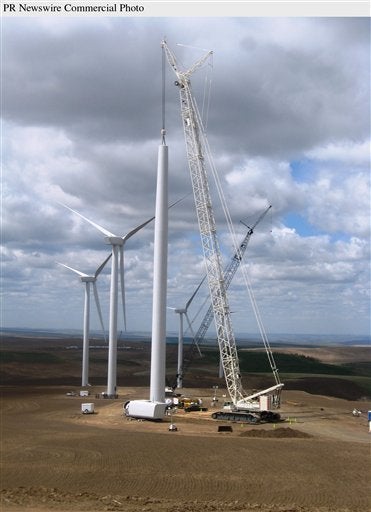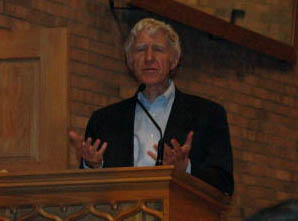
Dr. Bill Chameides is a member of the National Academy of Sciences and the dean of Duke University's Nicholas School of the Environment. He blogs at www.thegreengrok.com.
Lester Brown, founder and president of the Earth Policy Institute, spoke at Catawba College in Salisbury, North Carolina, this week. Both at dinner beforehand and later at his lecture, I had an opportunity to hear straight from the source about his Plan B 3.0 for saving civilization. If nothing else, it's ambitious.
For decades I have read Lester Brown's books. Think what you will of his dire predictions; his books are chockablock with fascinating, invaluable statistics. His annual State of the World publications, begun in 1984, are required reading for anyone concerned about global change, and a whole slew of them lines my bookshelf.
 Like his State of the World series, Brown's Plan B has a history. In 2003, Brown published Plan B: Rescuing a Planet Under Stress - A Civilization in Trouble, which concluded that the world was on a catastrophic course and significant changes were needed. Plan B 2.0, published in 2006, furthered those themes. Now we have the third in the series.
Like his State of the World series, Brown's Plan B has a history. In 2003, Brown published Plan B: Rescuing a Planet Under Stress - A Civilization in Trouble, which concluded that the world was on a catastrophic course and significant changes were needed. Plan B 2.0, published in 2006, furthered those themes. Now we have the third in the series.
Plan B 3.0 is based on three planks:
- cut greenhouse gas emissions by 80 percent by 2020,
- stabilize world population at 8 billion, and
Most of his talk focused on the first plank -- cutting greenhouse gas emissions.
Cutting Heat-Trapping Pollution: How Much, How Fast, and How
Much of the scientific community has concluded that to avoid dangerous anthropogenic interference with the climate, carbon dioxide (CO) must be stabilized at 450 parts per million (ppm), a reduction requiring an 80 percent cut in greenhouse gas emissions by 2050. For reference, CO is currently at about 385 ppm, up from about 280 ppm before the Industrial Revolution.
Brown belongs to a small but growing group of scientists who have concluded that CO is already too high, and that to save the Greenland Ice Sheet, CO must be reduced to 350 ppm. (For details, see this recent article.) So, instead of cutting CO emissions by 80 percent by 2050, Brown's plan calls for the same reduction by 2020.
Such a rapid reduction seems unobtainable, but Brown laid out a scenario whereby it could conceivably occur, the cornerstone of which is a rapid, major scaling up of wind energy.
To be sure there is plenty of wind energy out there, but could we harness so much of it in such a short time? Brown thinks so and used a World War II story to illustrate his point.
Read about it at thegreengrok.com.